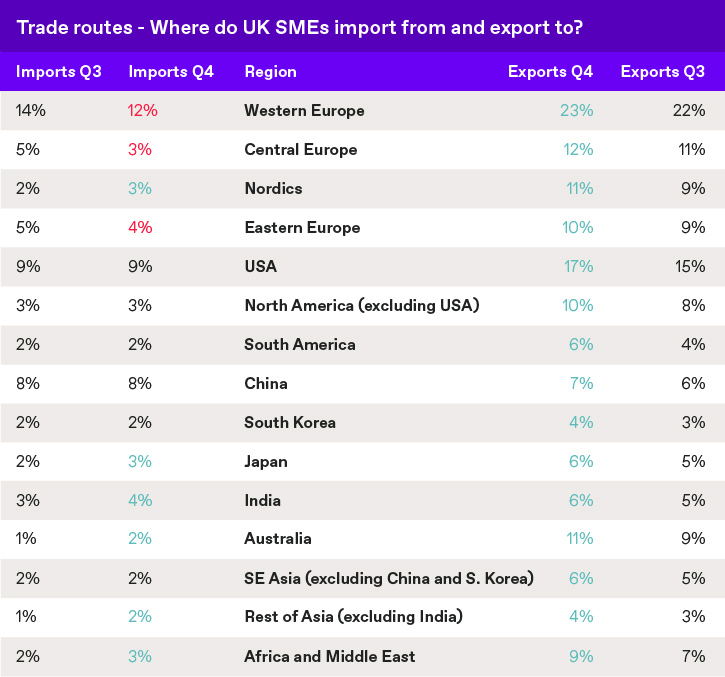Small businesses are now optimistic about international trade and growth prospect, and this shift happened in the last quarter of 2017. It’s after UK SMEs (Small Sized Enterprises) experienced a stagnant year of growth as well as global trade.
Some sectors thrived such as the manufacturing and exports increased despite the inactive form of transfer values and decline in the amount of SMEs trading. That’s why more UK SMEs are looking for a new future that is post-Brexit and more payments are now beginning to flow outside the European Union.
We spoke to Mark, Head of Trade Finance at Trade Finance Global about which markets UK SMEs are considering trading in:
“2018 marks a challenging year for SMEs and MSEs trading in the UK. With passporting rights and trade tarrifs being thrown into question for UK businesses post Brexit, and added volatility in FX markets, businesses have been hesitant to trade and enter into new markets.”
Global Trade Barometer
According to the Global Trade Barometer by WorldFirst, the ninth quarterly report argued that one in four SMEs in the next quarter will be looking to export to a new country.
The figures are clearly showing how UK SMEs have come to terms with the continuing Brexit uncertainty and are looking to develop new trading partners who happen to be beyond the European Union.
The survey also found that small businesses were demonstrating recovery of 5% from Q4 2017, a period in which their confidence levels were at an all-time low. All this happened because 30% of businesses are now confident than ever about their prospects for international growth.
SMEs are Trading Outside EU markets
UK SMEs is now increasing their trade outside European Union markets, and the business is booming. There was an increase of about 5% from Q4 2017, now the trade value is at Q1 2018 is £48,000, and that’s what an average small business has made so far from trading outside EU markets. It’s the second-highest figure in over two years that has been recorded by the Global Trade Barometer.
The only countries to remain steady through Q1 are China and USA, while still importing and exporting to and from other countries outside EU.

The biggest growth in payments from UK SMEs in the first quarter of 2018 saw about ten countries in which seven of them are outside EU, and they include Russia, Turkey, Singapore, Morocco, Indonesia, Norway, and UAE.
It’s worth noting that most respondents about one in ten (9% of them) are willing and looking to adopt a digital-only challenger option and move away from a traditional bank. Meanwhile, one in five (22% of them) have not shown any plans whatsoever of considering any new way of managing their international finances.
Capitalise on global ambitions: More support is required
Many small businesses are beginning to grab global trade opportunities as they come, and this is a result of a full year of negative headlines as well as downbeat growth projects. And the only way to protect themselves and stay in business is to take up international chances as they come.
UK SMEs are however asking support from the governments despite the more confident outlook. Actually, about 46% surveyed, which is nearly half of them, argued that external backing would work as an encouragement to them and they will export more.
This means that one in five (18%) SMEs are seriously looking to capitalize on global ambitions and need support in finding international partners while a portion of them (17%) would prefer government support in order to be able to trade overseas successful. They argued that even though there are independently looking for international trade partners, they are still trying to come up with alternative ways to penetrate into the global market.
The Way forward
Small businesses were preparing for the international risk by employing on a newly found mechanism of client hedging behaviour. The behaviour showed that there was an increase in all contracts in most popular currencies, and to be precise about six out of eight of them.
This shows that UK SMEs are willing to diversify their business as long as they protect themselves against any potential currency fluctuations. They are going into emerging markets with countries in Eastern Europe, Middle East, and Africa.
Video: How are UK SMEs preparing for Brexit?
Do you trade overseas in different currencies?
























